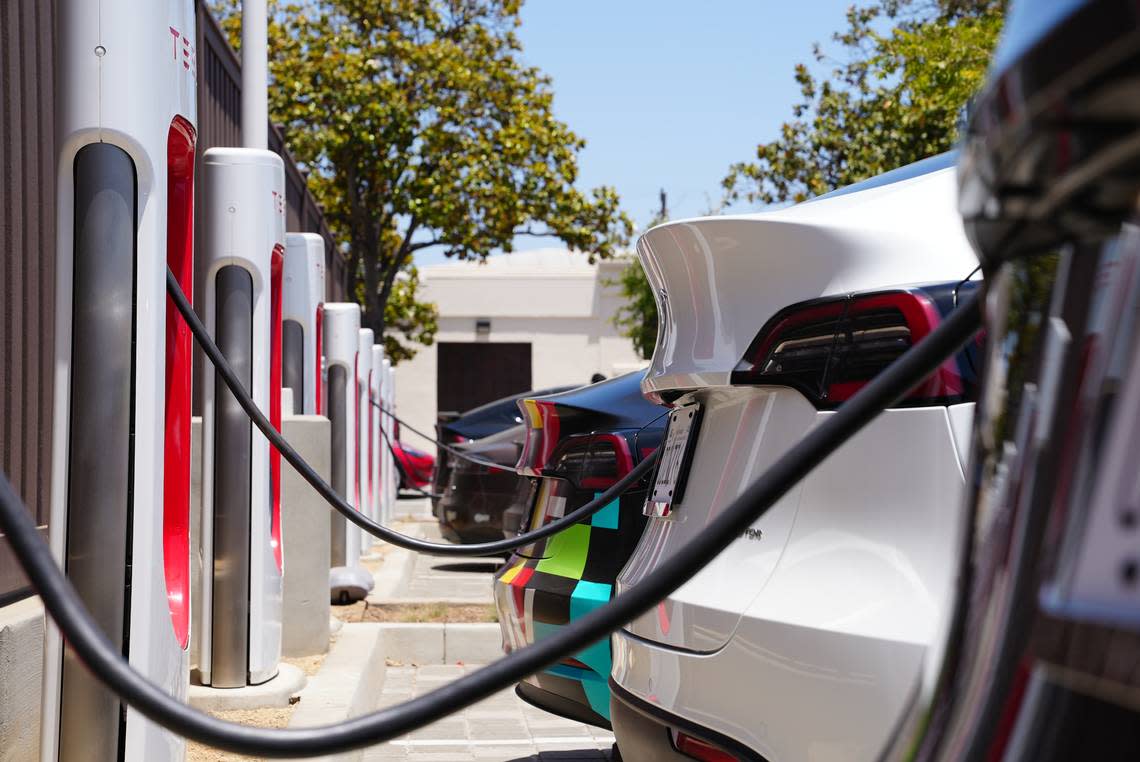Does your electric vehicle qualify for a $7,500 tax credit? Here’s how to find out

President Joe Biden signed the sweeping Inflation Reduction Act into law Aug. 16.
The act “addresses climate change, health care, taxation and the federal deficit,” according to the White House, and includes “direct appropriations, new programs, modifications to existing programs, and changes to the tax code.” The act also replaces the existing electric vehicle tax credit with updated regulations and criteria, changing which kinds of cars qualify.
Here’s what you need to know about updated EV tax credits for the remainder of 2022 and into 2023.
What changed?
Previously, new EVs purchased in or after 2010 were eligible for credits between $2,500-$7,500 depending on their battery’s capacity. Manufacturers were limited to 200,000 available credits. Used EVs were not eligible.
Under the new law, a series of changes are set to take place in the coming months and years. The Internal Revenue Service and the Department of the Treasury say they plan to release more details about these plans over the next few weeks and months.
Effective immediately, the act limits tax credits to vehicles for which final assembly occurred in North America. That means any EV purchased between now and the end of 2022 will only qualify for a credit if its final assembly takes place in North America.
For those who signed a contract for an EV before Aug. 16 but do not yet have possession of the car, the pre-Inflation Reduction Act rules apply, so final assembly in North America is not a requirement.
Starting in 2023, the credit will be expanded to include used and commercial EVs. Officials say they will release more information about this change soon.
Does your EV qualify?
To aid consumers in determining whether their vehicle is eligible, the Department of Energy compiled a list of 2022 and 2023 models that might meet the criteria for a credit.
The list includes the following vehicles:
Audi: Q5 (2022)
BMW: BMW 3-series Plug-In (2022, 2023), BMW X5 (2022)
Chrysler: Pacifica PHEV (2022)
Ford: Escape PHEV (2022), F Series (2022), Mustang Mach E (2022), Transit Van (2022)
Jeep: Grand Cherokee PHEV (2022), Wrangler PHEV (2022)
Lincoln: Aviator PHEV (2022), Corsair Plug-in (2022)
Lucid Air: 2022 models
Mercedes: EQS SUV (2023)
Nissan: Leaf (2022, 2023)
Rivian: EDV (2022), R1S (2022), R1T (2022)
Volvo: S60 (2022)
Other manufacturers qualify for the tax credit, but they have already reached their 200,000 cap, according to the list. These makers include Cadillac, Chevrolet, GMC and Tesla.
The department warns that production of some cars on the list might vary in certain cases. EV buyers should double-check their car’s manufacturing history by putting its Vehicle Identification Number in the Department of Transportation’s VIN decoder.
How to get your EV tax credit
Consumers can claim their tax credit on their annual tax filing.
When purchasing an EV, buyers receive certification from their car’s manufacturer proving that the car qualifies for a credit, according to TurboTax. The certification will include the car’s make, model and year as well as details about which credit it qualifies for.
As EV owners file their annual taxes, they should also submit a Form 8936 to the IRS. This form calculates expected credit amount and allocates the credit to reduce a person’s tax bill, TurboTax says.
However, this system will change soon under the Inflation Reduction Act.
Starting in 2024, EV buyers will have access to a more streamlined process that allows the credit to be directed to dealers at the time a car is purchased. Under this system, buyers can reduce the price they pay for their car at the time of sale.
New and used cars are getting more expensive. What experts say if you need to buy now
Mercedes-Benz says it’s using mushrooms in new electric vehicle: Here’s how — and why
Will you pay less for your prescriptions under bill just passed by Senate? What to know
